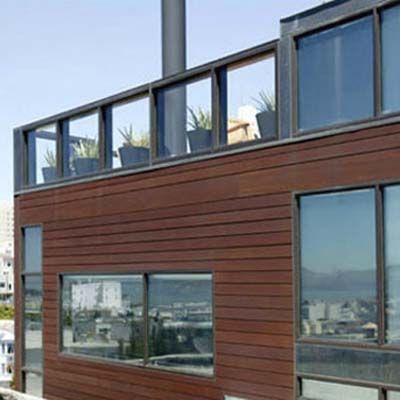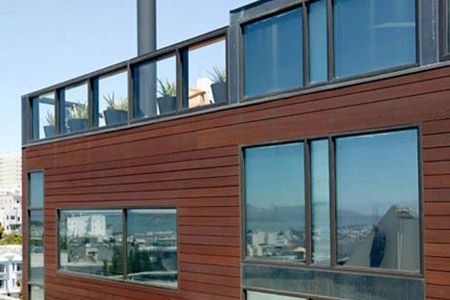
Flat roofs are common on many commercial and modern residential buildings. While they offer a sleek look and potential for additional outdoor space, they require more attention than their sloped counterparts. In this guide, we explore all aspects of flat roof maintenance, from tackling common issues to implementing preventive measures.
How To Maintain Your Flat Roof
Some maintenance tasks require professional expertise, but there are several you can do yourself to keep your flat roof in top condition. Your specific type of flat roof may require additional care beyond the following basics:
Safely Accessing Your Flat Roof
Before you begin any maintenance, you need to safely access your flat roof. Follow these safety precautions:
- Avoid working on the roof during wet or windy conditions
- Consider using a safety harness for added protection
- Use a sturdy, well-secured ladder
- Wear nonslip shoes
If you’re uncomfortable with heights or unsure about any aspect of roof maintenance, it’s best to call a professional.
Regular Inspections
Visually inspect your roof at least twice per year, ideally in spring and fall. Document your findings and address any issues promptly to prevent them from escalating. Look for these issues:
- Damage to flashing or seals around roof penetrations
- Debris accumulation
- Pooling water or drainage issues
- Signs of damage or wear
Clearing Debris and Vegetation
Debris can easily accumulate on flat roofs. Bruce O’Neal of Matthews Roofing in Chicago advises, “Fall is a good time to sweep off leaves and dirt that would turn into mulch over the winter.” Regular cleaning prevents clogged drains and gutters, vegetation growth, and moisture retention.
Addressing Drainage Problems
Proper drainage prevents water damage and extends the life of your flat roof. When maintaining your roof, ensure all drains, scuppers, and gutters are clear and functioning properly. Check for a proper slope toward drainage points, and consider installing additional drainage if persistent issues occur.
Basic Repair and Patching
You can repair minor damage, cracks, or leaks by following these steps:
- Clean the damaged area thoroughly
- Apply an appropriate patching material compatible with your roofing system
- Seal the edges of the patch to prevent water infiltration
“On rubber roofs, [you can patch] small holes with a regular bicycle-tire repair kit,” explains This Old House’s Tom Silva. However, for larger cracks or splits, professional attention is likely necessary.
Seasonal Maintenance Guide for Flat Roofs
Different seasons bring unique challenges for flat roofs, requiring specific maintenance approaches.
Spring and Summer Care
During warmer months, focus on these maintenance tasks:
- Addressing any drainage issues
- Applying protective coatings if needed
- Cleaning debris accumulated over winter
- Inspecting for winter damage
Summer is also an ideal time for more extensive repairs or maintenance projects due to favorable weather.
Fall and Winter Preparations
Proper winter preparation can significantly reduce the risk of cold-weather damage to your flat roof. Perform these tasks as colder weather approaches:
- Check and reinforce insulation to prevent ice dams
- Clear all leaves and debris to prevent drainage blockages
- Ensure all drainage systems are clear and functioning
- Trim overhanging branches to avoid damage from snow and ice
Extending the Lifespan of Your Flat Roof
Implementing proactive measures can make your flat roof last longer.
Protective Coatings and Treatments
Consider applying protective coatings to enhance your roof’s durability, lifespan, and overall performance. Reflective coatings can reduce heat absorption and UV damage. Waterproof sealants provide an extra layer of protection against leaks. Elastomeric coatings can help bridge small cracks and improve flexibility.
Upgrading Insulation and Ventilation
Proper insulation and ventilation play important roles in your flat roof’s lifespan. Adequate insulation prevents heat loss and reduces the risk of ice dams. Proper ventilation helps manage moisture levels, preventing condensation issues. You can also consider installing a green roof system for improved insulation and environmental benefits. Consult with a roofing professional to determine the best insulation and ventilation solutions for your specific roof.
Professional Flat Roof Services
While regular DIY maintenance is important, there are times when you need professional flat roof services.
When To Call a Roofing Expert
Professional roofers have the expertise and equipment to handle complex issues safely and effectively. Seek professional help in the following situations:
- Annual professional inspections for warranty maintenance
- Complex repairs or full roof replacement
- Large cracks or splits in the roofing material
- Persistent leaks or water damage
- Signs of structural issues, such as sagging
Costs of Professional Maintenance
The cost of professional flat roof maintenance varies depending on the roof size, material, and extent of work needed. Regular maintenance services generally cost between $4 and $13 per square foot, while more extensive repairs or flat roof replacements cost anywhere from $7–$30 per square foot.* While these costs may seem significant, they’re often much lower than the expense of major repairs or premature roof replacement due to neglect.
*Cost information in this article was sourced from HomeAdvisor and internal data.
Common Flat Roof Problems and Solutions
After building a flat roof, you’ll face specific challenges that require regular attention to prevent long-term damage and costly repairs. Understanding common issues will help you address problems quickly and effectively.
Drainage Issues and Leaks
Poor drainage is one of the biggest problems for flat roofs. O’Neal emphasizes, “Keeping drains and scuppers clear is the single-most-important maintenance task because backups there will trap standing water on the roof.” Standing water can lead to leaks, structural damage, and premature aging of the roofing material.
Professional intervention is often necessary for persistent or extensive leaks. Follow these steps to repair minor leaks yourself:
- Locate the source of the leak, which may not be directly above the interior water stain
- Clean and dry the affected area thoroughly
- Apply appropriate patching materials or sealants
- Monitor the repair to ensure its effectiveness
Weather Damage
Flat roofs are particularly vulnerable to weather extremes. UV radiation can cause material degradation over time. Temperature fluctuations lead to expansion and contraction, potentially causing cracks. Heavy snow loads can stress the roof structure, and strong winds may lift and damage roofing materials. Regular inspections and maintenance are crucial to address these weather-related issues promptly.
Blistering and Cracking
Blistering and cracking can occur due to trapped moisture or material degradation. You can usually repair small blisters by cutting, drying, and patching the affected area. For cracks, clean the area, fill it with an appropriate sealant, and reinforce if necessary. Extensive blistering or cracking may need professional repairs.
Our Conclusion
Keep your flat roof in good condition through regular maintenance, repairs and inspections. Although homeowners can do many maintenance tasks themselves, seek professional help for more complex issues or if you’re unsure about any aspect of roof maintenance.
